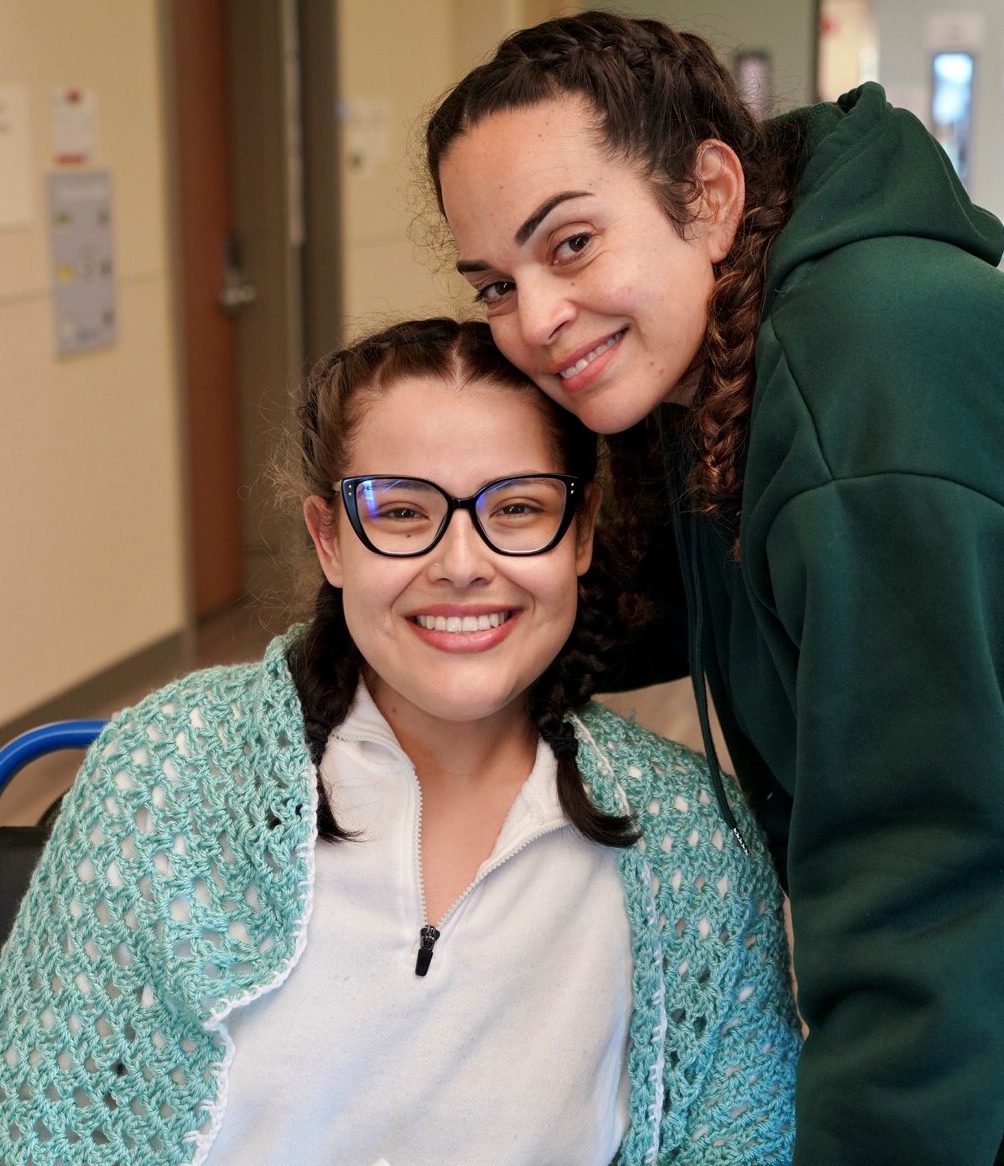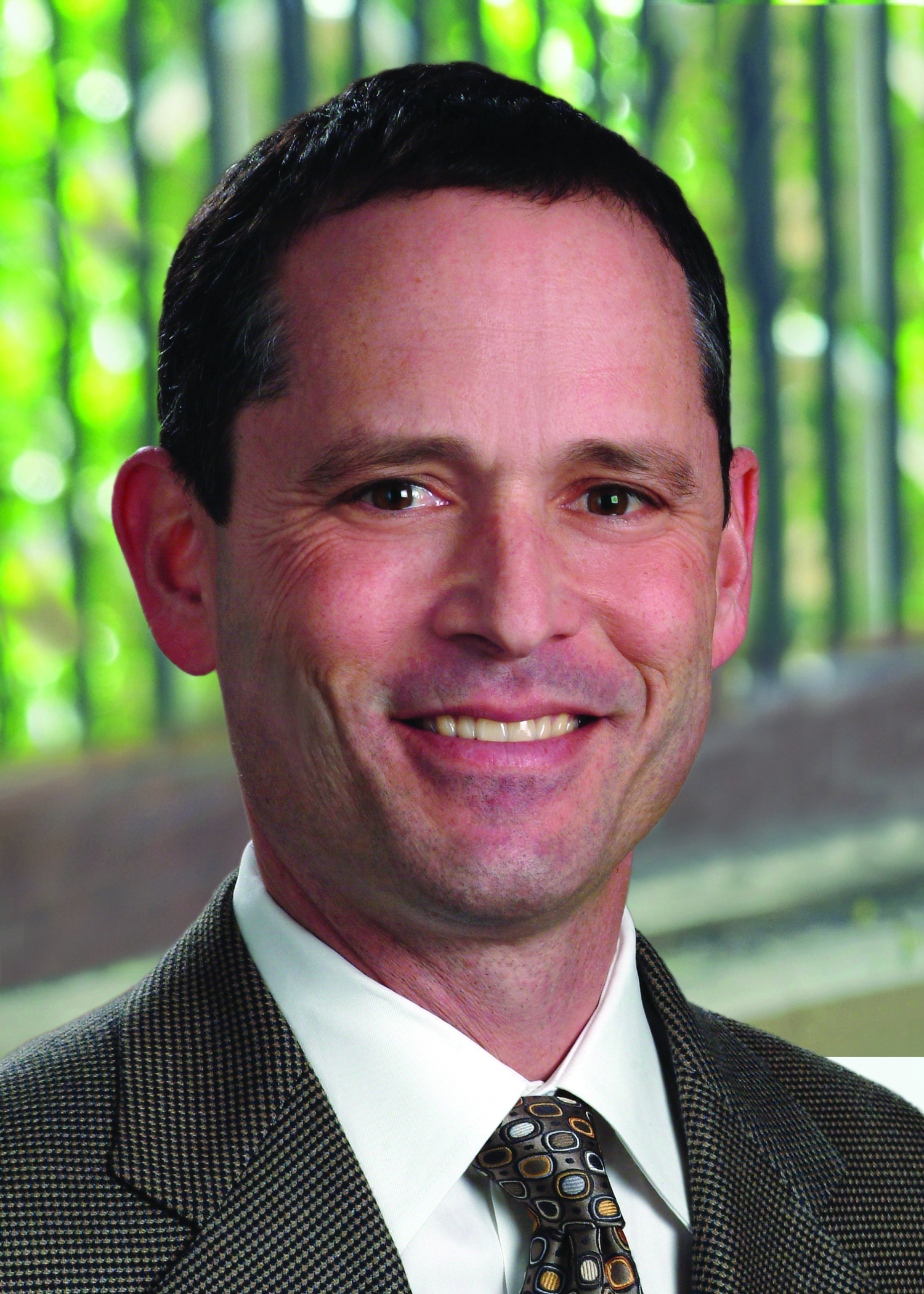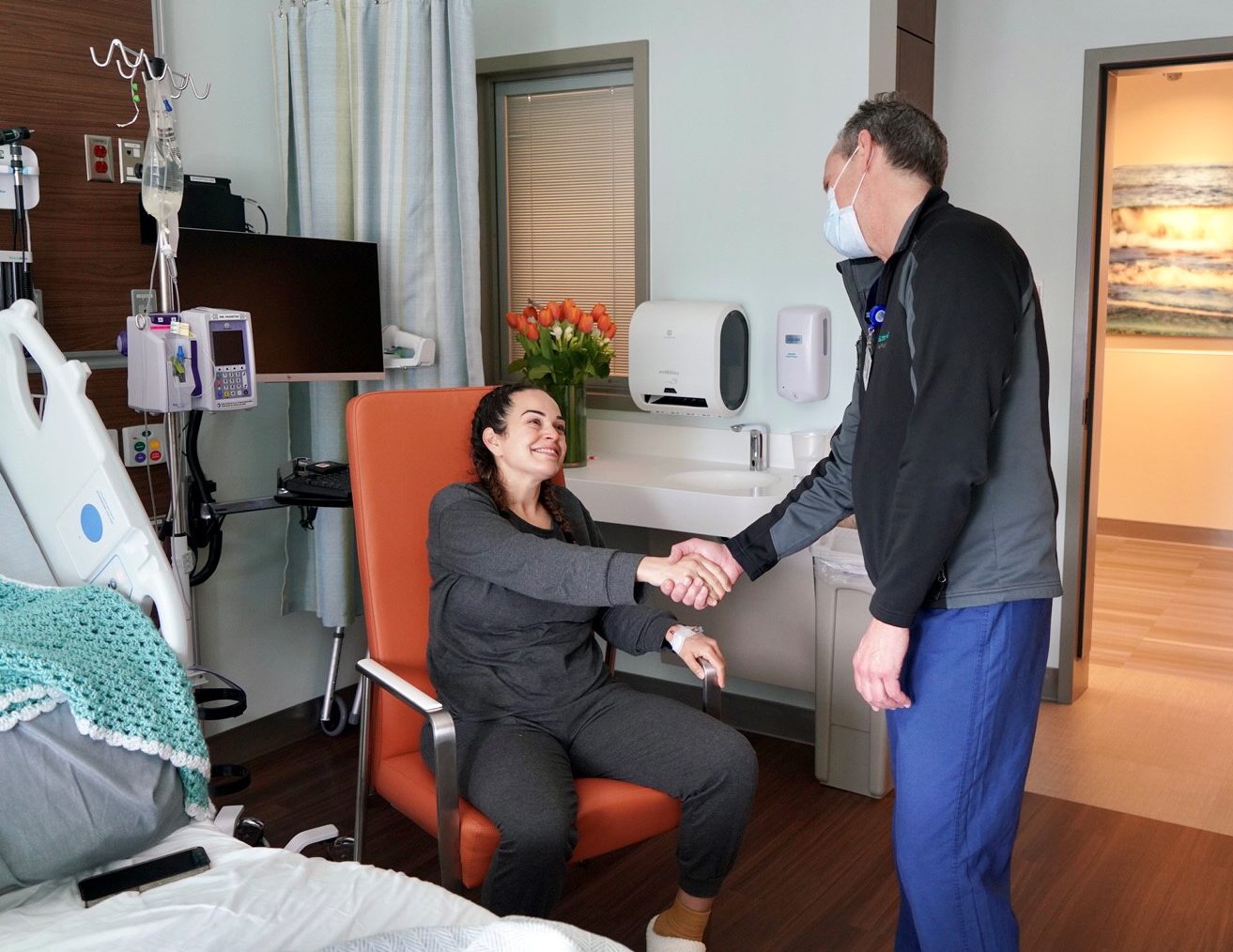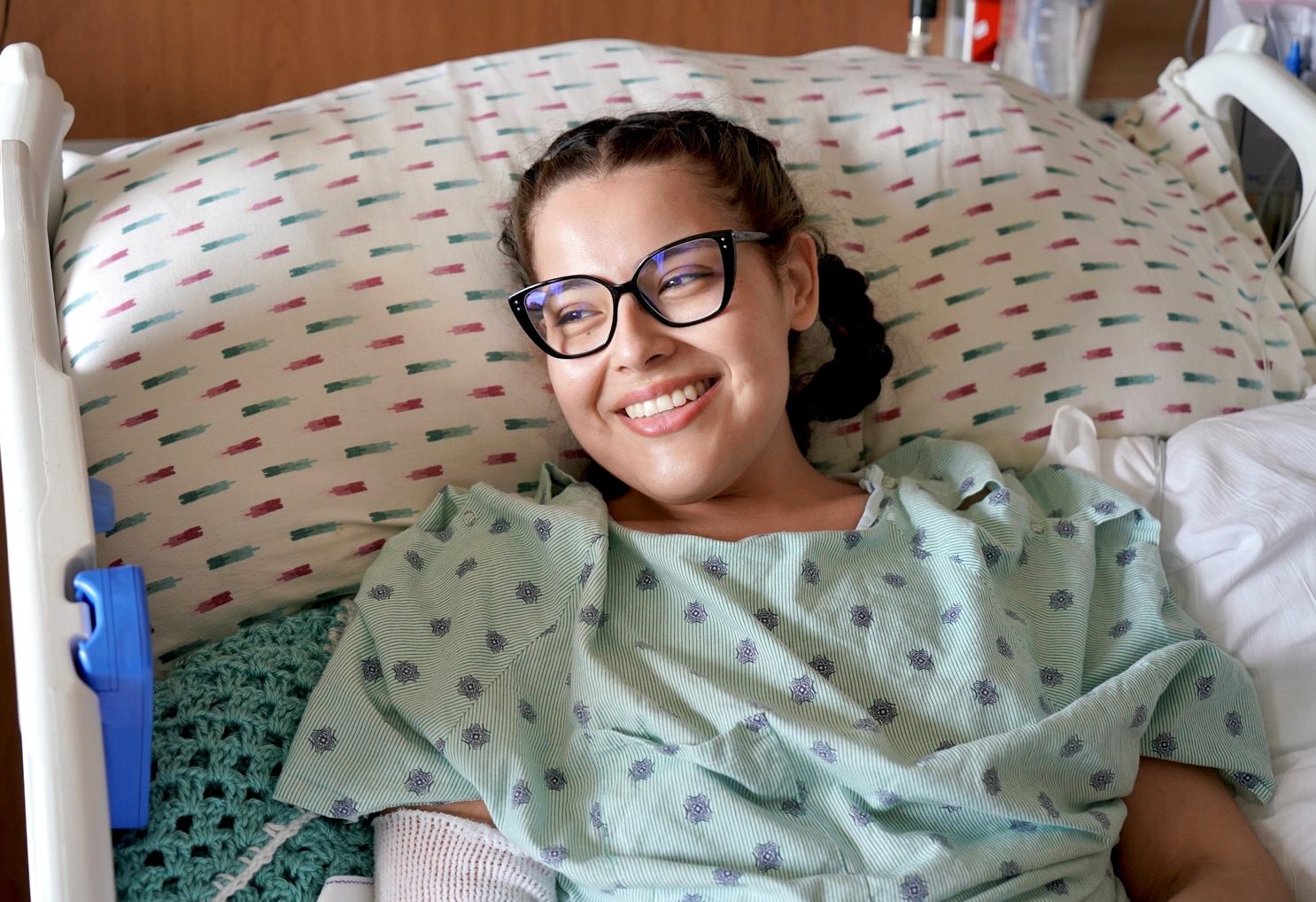April is National Donate Life Month
Gabby Rojas has a big reason to smile. That’s because she just got a life-saving kidney from her sister-in-law, Danielle Rojas.
“My energy is really through the roof,” says Gabby, 27. “I feel happy, blessed and grateful.”

Gabby Rojas (left) and her sister-in-law Danielle Rojas (right) reunite ahead of their discharge from Sutter’s California Pacific Medical Center.
Both women are from Modesto, Calif.
The pair had their transplant operations this month at California Pacific Medical Center, part of the Sutter Health system, in San Francisco.
“How fitting that April is Donate Life Month,” says Danielle, who shares that when the two arrived for their pre-op appointment they learned of the observance and took it as a sign.
“We got teary and felt like everything was coming together,” says Danielle, making a hand-gesture signaling something linking up. “It felt meant to be and super cool.”
Gabby says Danielle has been in her life since she was 2 years old and helped raise her along with her parents. “It was very emotional learning she was a match,” recalls Gabby.
Such a strong match, Gabby explains, that the advanced organ therapies care team was shocked the women weren’t blood-related. “On paper, they appear as closely matched as sisters. It’s statistically very unusual,” says Dr. Steven Katznelson, a transplant nephrologist with Sutter Pacific Medical Foundation who helped oversee the women’s cases.

Dr. Steve Katznelson
According to Dr. Katznelson, “Living-donor kidney transplant is the best transplant option given the superior short- and long-term successes. Additionally, since living-donor kidney transplants can be arranged as soon as the donor and recipient evaluations are complete, the recipients do not have to wait years on a waiting list. This allows for recipients of living donor kidneys to avoid or minimize dialysis.”
“Danielle’s level of commitment to help her sister-in-law was remarkable,” he adds. “Even the day after their surgery they were both already asking how they can help spread the word so more patients can benefit from their experience.”
Transplant testing. Could you be someone’s match?
Sutter’s CPMC performs roughly 200 kidney transplants each year. Through the hospital’s Living Kidney Donor Institute, the team has a goal of 30% of its kidney transplants each year coming from a living donor, as opposed to a deceased donor. So far in 2023, the team is averaging slightly higher than its 30% aim.
The evaluation process can start with a simple intake form. Danielle says for individuals who maybe don’t know where to start but think they can help someone with the power of donation, she encourages testing as a first step.
“Tell other people to get tested, too,” she says, “because you may not be a donor for someone in your family but someone else might be.” A person does not have to be the same race or even the same blood type to be a good kidney match. “Doctors and medicine can do such innovative things with cross-testing people now … you never know unless you try,” Danielle says.
A new buzzy rush and forward momentum is driving Gabby’s life ahead. Having been diagnosed with kidney challenges in her late teens and now nearly a decade of living in limbo, Gabby is ready to re-start life and is thankful for her care and transplant at Sutter.

Danielle Rojas is greeted by Dr. Steven Katznelson, transplant nephrologist, following the donation of her healthy kidney to her sister-in-law Gabby Rojas.
“It’s been incredible … amazing nurses, amazing doctors and it’s just an amazing place,” she beams.
Gabby and Danielle can now count themselves among CPMC’s rich history of living-donor kidney transplantations, with the hospital’s first transplant of this kind taking place 50 years ago in 1973.
Gratitude remains the common denominator. As the decades have progressed, the life-saving gift and miracle of transplant continues at the forefront.
“I knew it was going to be an emotional experience, but I had no idea the emotions I would feel once I saw Gabby look as amazing as she did right after surgery,” Danielle says. “And just looking at her face, knowing how grateful she is at having a second chance at life. It’s been great.”
National Donate Life Month encourages Americans to register as organ, eye and tissue donors, and to honor those individuals that have saved lives through the gift of donation.





